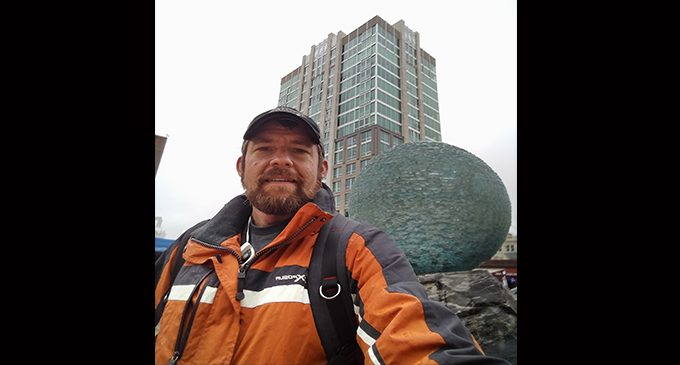Business/nonprofit partnerships key in breaking transportation barriers

By John Railey
It is about six miles from Nicholas “Nick” Pipes’ Asheville home to his new job as a cook/dishwasher. That six miles can take at least an hour for Pipes, who usually relies on the public bus system, his bike and his feet to get around. For three weeks, however, he got solid help from the Lyft ridesharing business, getting to work in about 15 minutes. “This ridesharing service has been essential to me,” Pipes said.
Lyft is running a nationwide initiative in more than 50 cities (https://www.lyft.com/lyftup/jobs-access) with partners including Indeed.com’s Essentials to Work program. Pipes was able to tap into the initiative through one of its regional partners, the nonprofit Goodwill Industries of Northwest North Carolina, based in Winston-Salem.
Winston-Salem State University’s Center for the Study of Economic Mobility (CSEM) has extensively studied local transportation issues. Among CSEM’s research on the problem is a finding that riders who use the Winston-Salem bus system to get to work spend an average of 12 hours a week commuting. That amounts to a time tax, CSEM Director Craig Richardson has said, subtracting hours that riders could spend advancing at work. CSEM has found that solutions to such transportation problems would best come from a variety of sources, including partnerships such as the Lyft one.
“It’s saved my butt so many times from being late,” Pipes said. “The Lyft rides usually pick me up within 15 minutes, as opposed to at least an hour riding the bus, by the time I walk to the bus stop and make my transfers. Lyft gets me to work in about 15 minutes. I appreciate our bus service and the hard work they do, and combine it with Lyft.”
Ashley Adams, a Lyft spokeswoman, said that “We know that access to transportation is one of the biggest drivers of social and economic mobility. Transportation connects people to jobs, healthcare, education, food, and each other. Millions of people lack access to necessities simply because they can’t get a ride.”
Of the program’s Winston-Salem participants, she said, the majority used the codes to get to their first few weeks of work, and about 60% of the participants said that they would not have been able to get to work without a Lyft ride.
Goodwill’s contract with Indeed.com for the Lyft rides expires at the end of December. Adams said, “We intend to continue the partnership in 2023, but any questions about specific details should be sent to Goodwill.”
The contract should be renewed. The Lyft program is needed in our area, where programs often fizzle. For example, The Winston-Salem Foundation funded a ride-to-work program earlier this year that helped set its approximately 50 participants on the path to upward economic mobility at a cost of about $600 per person. The program ended when the grant ran out.
Participants in the Lyft program receive codes, each with a $30 dollar value, that they use as phone apps. The program lasts three weeks for participants, during which time they can use the codes to get to job interviews, job training or work. As his three weeks in the program drew to a close in mid-November, Pipes figured the codes he used amounted to a value of about $350. With the help of that boost to his savings, he now plans to buy either a moped, a motorcycle or a car.
Janice Richardson, the Career Connections Manager for Goodwill of Northwest North Carolina, said since April, the Lyft partnership has helped 46 people with 633 codes across seven of the 31 counties the nonprofit serves. Of those seven counties, the most participation has come from Buncombe, where Pipes took part as one of 18 participants, and Forsyth, which has had 12 participants. “They’re ecstatic,” Janice Richardson said in general of program participants. (She and Craig Richardson are not related.)
“Often, that’s really the thing that makes or breaks when they can start work. They just don’t have another way. It removes that transportation barrier for so many people. Most of them are still employed, and, in some cases, they’re starting to get their own vehicles.”
For the 46 participants thus far, she said:
*Thirty-one have used it for their first three weeks of employment.
*Eight have used it for transportation to interviews.
*Seven have used it for job training.
“This program has really been a game changer for our participants,” she said.
John Railey, raileyjb@gmail.com, is the writer-in-residence for CSEM, www.wssu.edu/csem.










